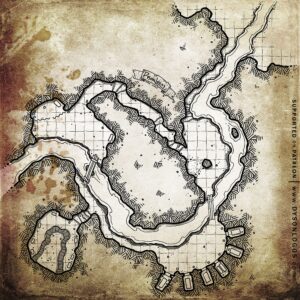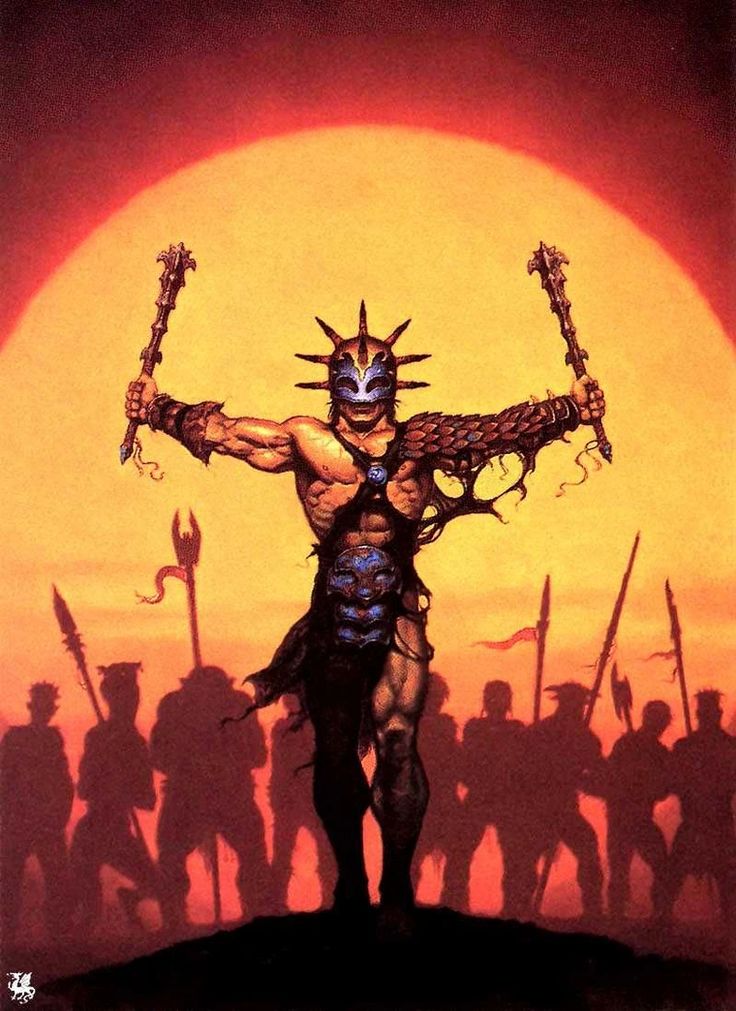I am merely typical in dreaming about play in the world of the Dark Sun, as presented as an Advanced Dungeons & Dragons 2nd edition product in 1991. I am aware that it’s been developed by who-knows-who in God-knows-what media, and that all sorts of fandom wikis and whatnot have bloomed in the internet since then, but I don’t know anything about that. All I know is the original publication and a few supplements, plus the re-presentation in D&D 4th editon (2010).
Here are two important points, however.
- The pulp 1930s and especially the comics 1970s source content are trippy and nudist. TSR’s family-friendly pink slime fantasy simply could not do that, and although the creative team went as far as they could (enough to like), the result isn’t enough for me.
- Textually, the purpose of play is, bluntly, is “do not play.” As with all the betrayed TSR content of this period (Al-Qadim, Spelljammer, Planescape), there is only consumption of other media and fake, programmed audience participation.
Therefore I have always bounced off actually playing the thing. If I do “it,” then it’s an etiolated echo of something I know well from its flowing, glowing source. I can sand it down and replace some parts, as an ordinary act which most of us do with any textual content … but then, “how” I do it must also change … and by then, I might as well not have bothered and just done a Richard Corben homage of my own in some way I like.
Some time opened up at Spelens Hus, with the end of the half-orcs-et-cetera AD&D game, and I felt a need to blow off steam. My cyclical re-visit for this content happened to be in an upswing, so, why not. I put all “D&D”-ness out of my head and thought only about usable Dark Sun material … indeed, merely things I liked. I pared down or ignored a lot, like any and all magic/whatever aside from psionics, or brushing out the tieflings and dragonborn additions in the 4th edition. Without feeling too committed, I made a first pass at using The Pool.
Somewhat to my surprise, the resulting document actually looked doable.
The first page is written mainly to prompt questions like “what is the Temple of Thought,” toward a conversation that would nail down character ideas. Since I didn’t know what sort of characters would be played, I needed to provide a concrete starting point, “you are here.” I have the big map in the boxed set and the somewhat more detailed version from 4th edition.

I picked a few places that seemed fun and open for action and looked through the two versions of text about them. Never mind Tyr, which is over-detailed and too embedded in directive content. I focused on the neighboring cities Gulg and Nibenay, and the more I thought about it, definitely the latter. I rounded out the nice city map for Nibenay with a couple of Dyson Logos maps in my archive which seemed right for dangerous out-of-town places. This one caught my eye especially.

I looted some names from an otherwise-worthless adventure pack I have and went in with minimal preparation. Well, it was a lot more than you see in these pages because these are only notes to myself, reminders for ideas and personalities I perceived as solid and didn’t bother to write down.
I proposed a session at Spelens Hus, attended by Denica, Erik, Christian, and Filip … which kicked in fast and hard with some great characters. Sure enough, a couple of the concepts demanded that play must be in rugged circumstances, and pleasantly, the others fit extremely well into the notions behind my scribbled notes: an ambitious junior shadow bride risking a dangerous visit to some ruins in the rocks near Bremill pass; the tribal or scary creatures there are at least willing to negotiate their sacred object to her (as it’s patently too dangerous to keep), but things are complicated by a belgoi, conceived as somehow in collusion with House Shom vs. the bride.
Here we are, doing this thing! I omitted most of character creation, which is too bad in a way. I might reserve that section for inclusion in the comments or in some later post more focused on The Pool.
As a minor rules point, my concept for the belgoi is that if I am narrating the outcomes, it can take two, maximally three hits to be defeated, but if someone else is narrating an outcome, they can take it down.


2 responses to “Dark + Sun + Pool”
I am enjoying the inspired play, which is where many of those AD&D 2E boxed sets could have gone, but didn’t. Not just the limitations of marketing I think, but the system itself had too many constraints on play. The 4E version seemed a better fit in terms of system, but I felt lost something in translation.
I can’t say we’ve really gone anywhere or done anything regarding my aesthetic range for the topic yet, but it’s been a good start. My model was the RuneQuest game from five years ago, which began as a monster fight with bits and pieces of culture in it and evolved into a distinct table-generated vision.
Regarding system, one of my big content shifts is removing all the elementalism, so that any priests or cult leaders or whatever are still psionicists, just with a good line of talk which they possibly believe themselves. The point is that the original set “had to have clerics,” so they undercut their own aesthetic of science fantasy (psionics) in favor of having familiar options.
That doesn’t matter much in terms of detailed system for us, as in-fiction causes and effect are applied differently from either version of D&D in The Pool. But it would be a big change if we were starting with the AD&D2 rules.
As a set-up for my next point, I want to clarify that I quite like the distortions and reimaginings of elves, halflings, et cetera in the original Dark Sun. My only quibble is to see no reason to keep dwarves, when you have muls, which could just as easily be breeding-distorted humans as dwarf hybrids; oh, and as far as I’m concerned, half-elves operate as elves or humans, individually.
The 4th edition material is useful to me mainly in its somewhat more critical and actionable text about the cities, environments, and creatures. Unfortunately it suffers even worse from the need to pack in existing IP, so now we have dragonborn, tieflings, eladrin, and goliaths, as well as a general acknowledgement that “under there” or “in the past,” Athas was a bog-standard D&D genre world, and it’s still connected to the familiar ones via portals. During character creation, I kept saying, nope, we’re not using that either …